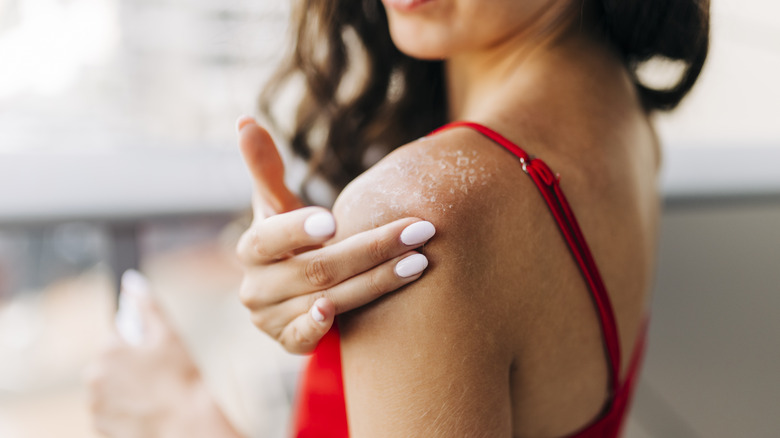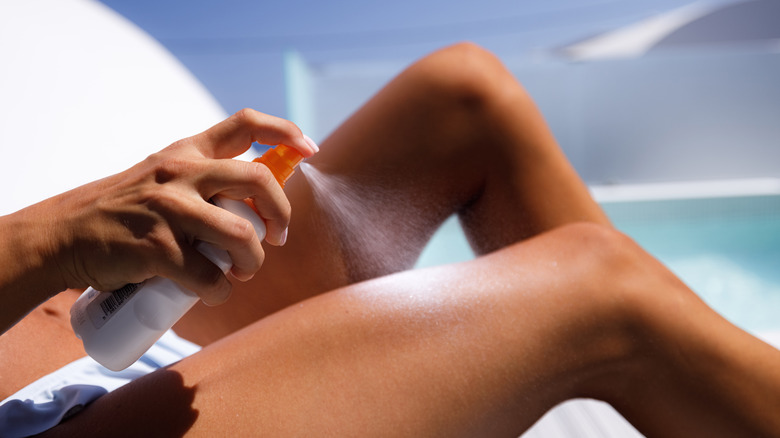Timing Is Everything When Treating Sunburn With Coconut Oil
With the dreary, cloudy days of winter and spring behind us, it's time to embrace the heat of the sun. Whether that means picnics in the park, tanning on the beach, or soaking up the rays during your hot girl walks, taking advantage of warm weather should always be at the top of our to-do list. But, as much as we enjoy the balmy days of summer, getting sunburned is certainly our least favorite aspect of the season.
Even when wearing sunscreen, it's possible to get a sunburn if you're not wearing the proper amount or reapplying enough. Aside from the swelling, redness, and blisters that come with a sunburn, they also dry out the skin. As a versatile beauty staple, coconut oil is anti-inflammatory and moisturizing, alleviating the pain and dryness that accompanies a sunburn. It works as an occlusive, trapping moisture into the skin.
Unfortunately, this also means that it can trap heat into the skin, exacerbating the effects of a sunburn. While it's still a good salve to apply, you may want to wait a bit before you slather on the coconut oil.
When should you put coconut oil on a sunburn?
Although a sunburn happens hours after being out in the sun, the painful symptoms appear as soon as the physical ones do. When you touch them, the skin feels heated and sensitive. Placing oil on top of sizzling skin will only entrap the heat, worsening your symptoms. Since oil heats up, it's best to place a cooling ingredient on top of your skin instead.
To heal a sunburn, place aloe vera on top of the affected area. Choose one without fragrance or dyes, as they can potentially irritate the skin further. The gel promptly soothes and cools the skin thanks to its anti-inflammatory and antibacterial nature. If you don't have access to aloe vera, you can press a cool, damp washcloth onto the skin.
After a few hours, your skin should start to cool down. Wait until then, or when the sunburn starts to peel, to rub some coconut oil on. Alternatively, using a fragrance-free, moisturizing lotion or a hydrocortisone cream on top of the area will help as well.
Do this to avoid getting a sunburn
Sunburns are directly caused by UV rays from the sun, so wearing the correct amount of sunscreen and applying it in a timely manner should help prevent them. If the sunscreen you're using is chemical, consider switching to a mineral one instead. While chemical sunscreens absorb UV rays, mineral versions reflect them away, making them a better option for sensitive skin.
You should also be reapplying your sunscreen at least every two hours. Whenever you get out of the water or sweat away the sunscreen, put some more back on. As a rule of thumb, the amount of sunscreen you put on your entire body should be enough to fill a shot glass. For a spray-on sunscreen, spritz it on until each body part is glistening.
Similarly to applying coconut oil to sunburns, timing is everything when it comes to knowing when to avoid the sun. Between the hours of 10 a.m. and 4 p.m., you should try to avoid sunshine. Although it's a significant time window, this is when UV rays are at their strongest. If you know you're prone to sunburns, stay under the shade and wear loose-fitting clothing that will cover up your skin.


